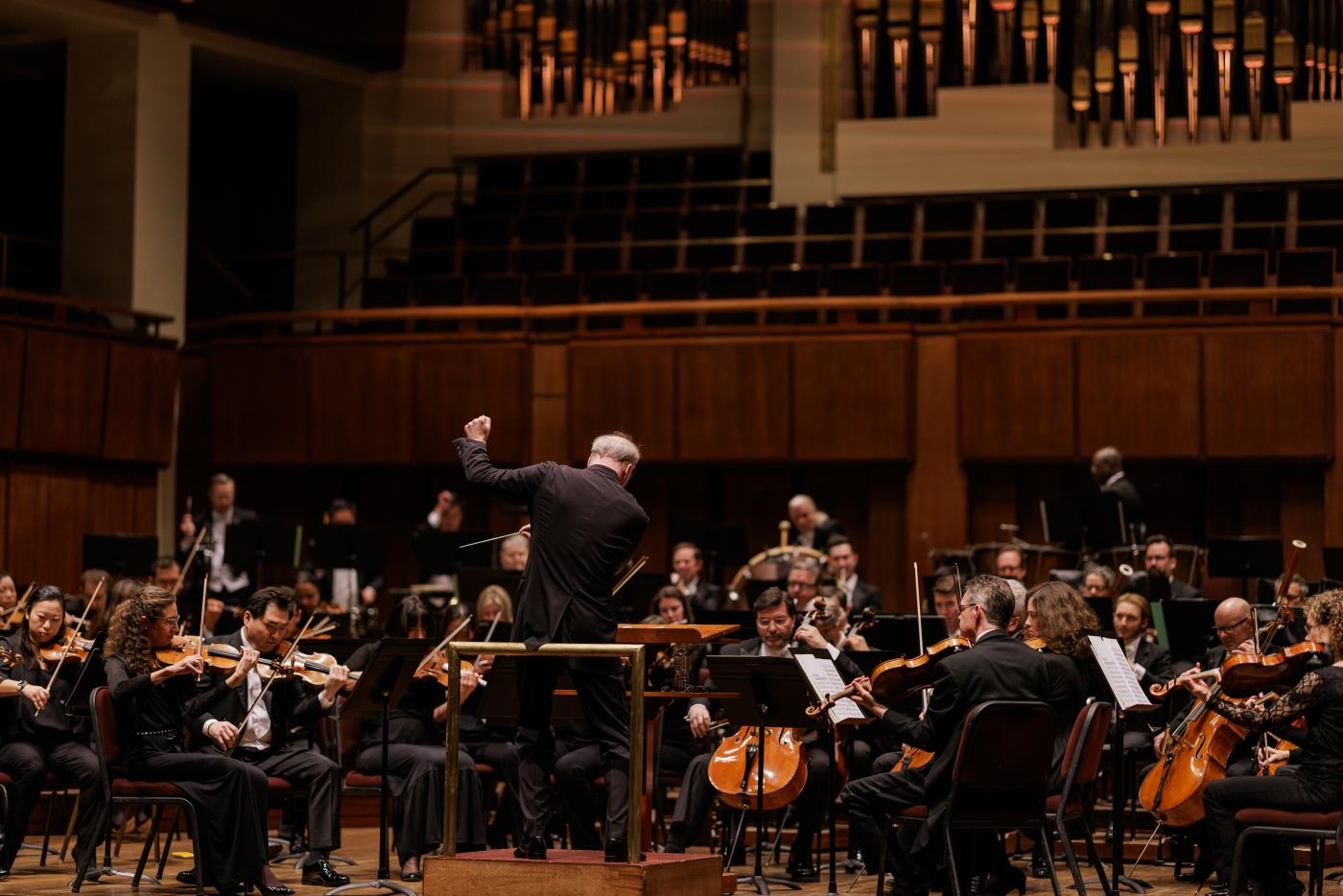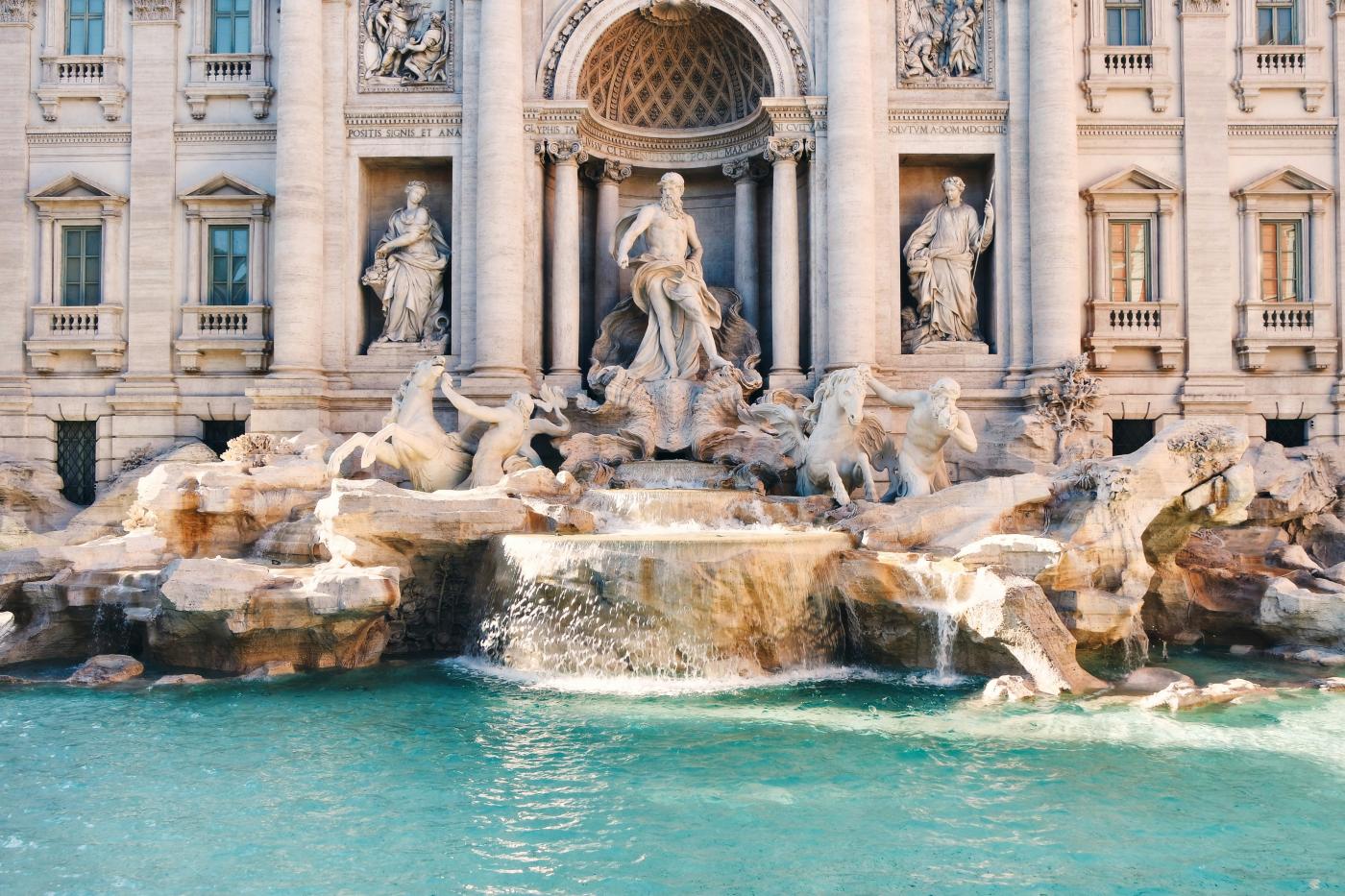In honor of the National Symphony Orchestra’s European tour February 16-28, February’s NSO Showcase program is a sort of musical travelogue with NSO music director Gianandrea Noseda as our guide. We'll visit Florence and Rome, take a cruise on the Rhine River and a tour of Cologne Cathedral. We'llalso take a side excursion to visit a nomadic tribe in the Russian hinterland.
As always on NSO Showcase, the music has been recorded live at the John F. Kennedy Center for the Performing Arts. In this case we have performances ranging from 2017 to 2023.
The program begins with Ottorino Respighi’s Botticelli Triptych, which he wrote in 1927 for his American patron, Mrs. Elizabeth Sprague Coolidge. The inspiration came from three paintings by Renaissance artist Sandro Botticelli which Respighi saw at the Uffizzi Gallery in Florence - "La Primavera” (Spring), “The Adoration of the Magi,” and “The Birth of Venus.” The beauty, intricacy and symbolism of these canvases is phenomenal. For example, “La Primavera” is a botanical marvel, with 500 different plants and almost 200 species of flowers depicted. “The Adoration of the Magi” features portraits of VIPs in 15th century Florence. Respighi illustrates this musically with some exotic instruments, and even quotes the Christmas hymn, O Come, O come Emmanuel.
Dating from a decade earlier, Respighi’s Fontane di Roma, is also featured on February’s NSO Showcase program. It was his breakthrough piece, and the first part of his Roman Trilogy which would include the Pines of Rome and the Roman Festivals. Respighi had settled in Rome in 1913 to teach composition at the famed Santa Cecilia Academy. With the onset of World War, I, and the death of his mother, he became despondent, but managed to compose his first great hit, the Fontane di Roma, 4 tone-poems depicting Rome’s fountains from sunrise to sunset. The 1917 premiere in Rome was a flop, but the following year, Toscanini asked to conduct it in Milan, and it was a resounding success...as his publisher Ricordi telegraphed: “a dazzling triumph.”
Respighi himself supplied the poetic descriptions for each fountain. 1. A fountain at Valle Giulia at dawn, with flocks of sheep passing and disappearing in the fresh damp mists of the Roman dawn. 2. A sunny mid-morning at the Triton Fountain, with crowds of naiads and tritons chasing one another. 3. Midday at the Trevi fountain features Neptune’s chariot pulled by seahorses. 4. Sunset at the fountain at the Villa Medici...the angelus bells toll, and all quiets down peacefully into the silence of the night.
So, we've glazed at Renaissance artwork and admired Roman fountains on our musical tour. Our excursion continues with a visit to a remarkably civilized prison camp in the Russian hinterlands. There the tribal leader, Khan Konchak, entertains his prisoner, Prince Igor with the Polovetsian Dances. These exotic dances are so popular that they've often been used in other contexts--they were featured in Sergey Diaghilev’s first Russian ballet season in Paris, quoted in the 1953 musical Kismet and adapted into the song “Strangers in Paradise.” Along with other great Russian favorites, they graced the opening ceremony of the 2014 Winter Olympics in Sochi. As The Washington Post review of the NSO’s 2018 concert noted, even such a popular work comes alive in the hands of Gianandrea Noseda: “he’s got a knack for making old favorites sound not just new but renewed.”
The NSO’s tour will take them to 9 cities: 3 in Spain, 1 in Italy and 5 in Germany, including Cologne’s Philharmonie. This ultra-modern venue is built amphitheater-style and even has seats designed by a sports car manufacturer. Newly arrived at his job as musical director at Düsseldorf, Robert Schumann and his wife Clara visited Cologne and toured the Cathedral. Upon returning home, he set to work on his Rhenish Symphony, his fourth, but third to be published. The work went quickly, sketched out in just a few weeks. He needed to make a splash in his new job, so he purposefully made the music as accessible as possible. This joyful, relatable, and grand, 5-movement symphony celebrating the Rhineland’s sacred river was a brilliant idea. According to one writer, the performance with Schumann himself conducting, was greeted with hurrahs. Sadly, after this hopeful beginning, things went downhill fast, and just 3 years later, Schumann attempted to end his life by jumping into the very river he was celebrating here.
The extra movement in this symphony (most have 4) is described as “in the character of a procession in a solemn ceremony.” The ceremony it refers to could be the recent elevation of the Archbishop of Cologne to Cardinal. I find Schumann’s musical evocation of the Cathedral fascinating. The building was left incomplete by medieval builders. In 1842, so just under a decade before the Schumanns visited, civic leaders in Cologne decided to finish the edifice using modern techniques but staying faithful to the ancient plans. Schumann’s music perfectly reflects this architectural marvel. He conjures up the ancient atmosphere with 3 trombones, the first time they're heard in the symphony, with the flute sounding heavenly above.
Full of local flavor, February’s NSO Showcase is a great midwinter escape. As NSO program notes once put it: “Just let your ears do the sightseeing!”
NSO Showcase airs on WETA Classical at 9 p.m. on February 7th and can be streamed all month long on WETAClassical.org.
PBS PASSPORT
Stream tens of thousands of hours of your PBS and local favorites with WETA+ and PBS Passport whenever and wherever you want. Catch up on a single episode or binge-watch full seasons before they air on TV.

